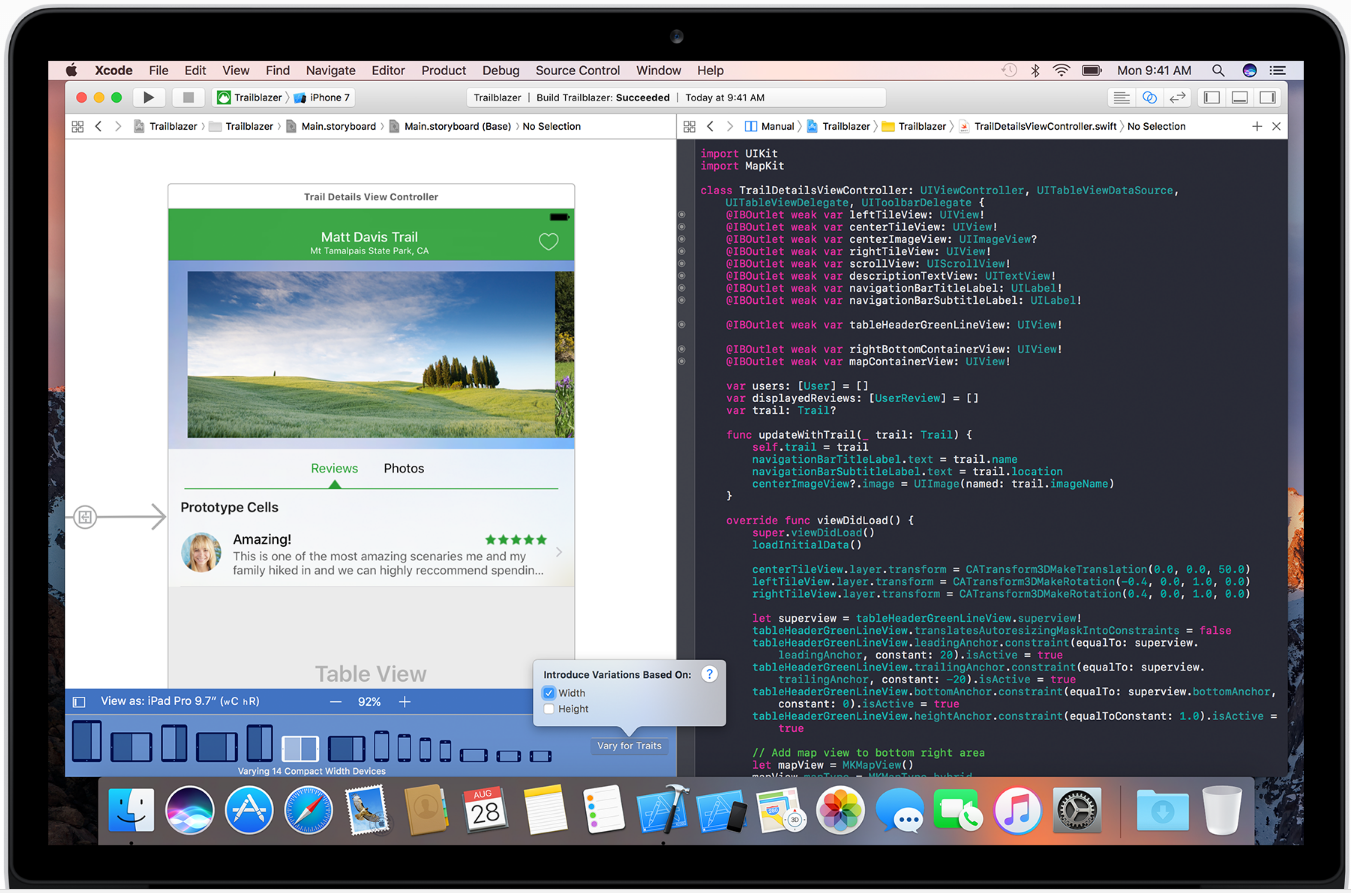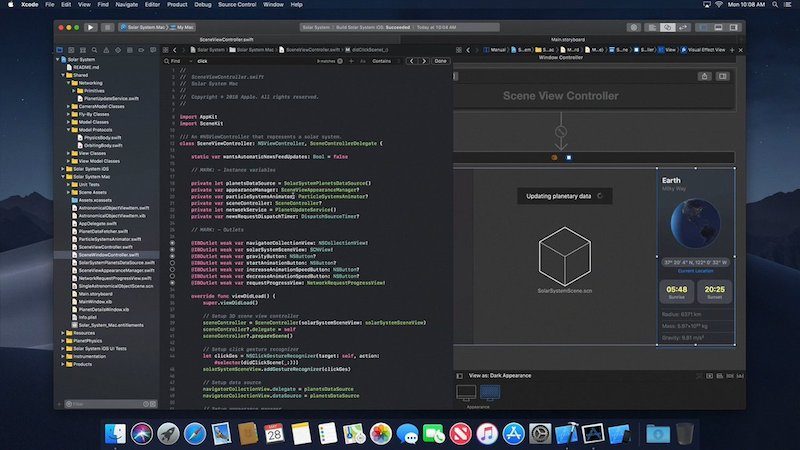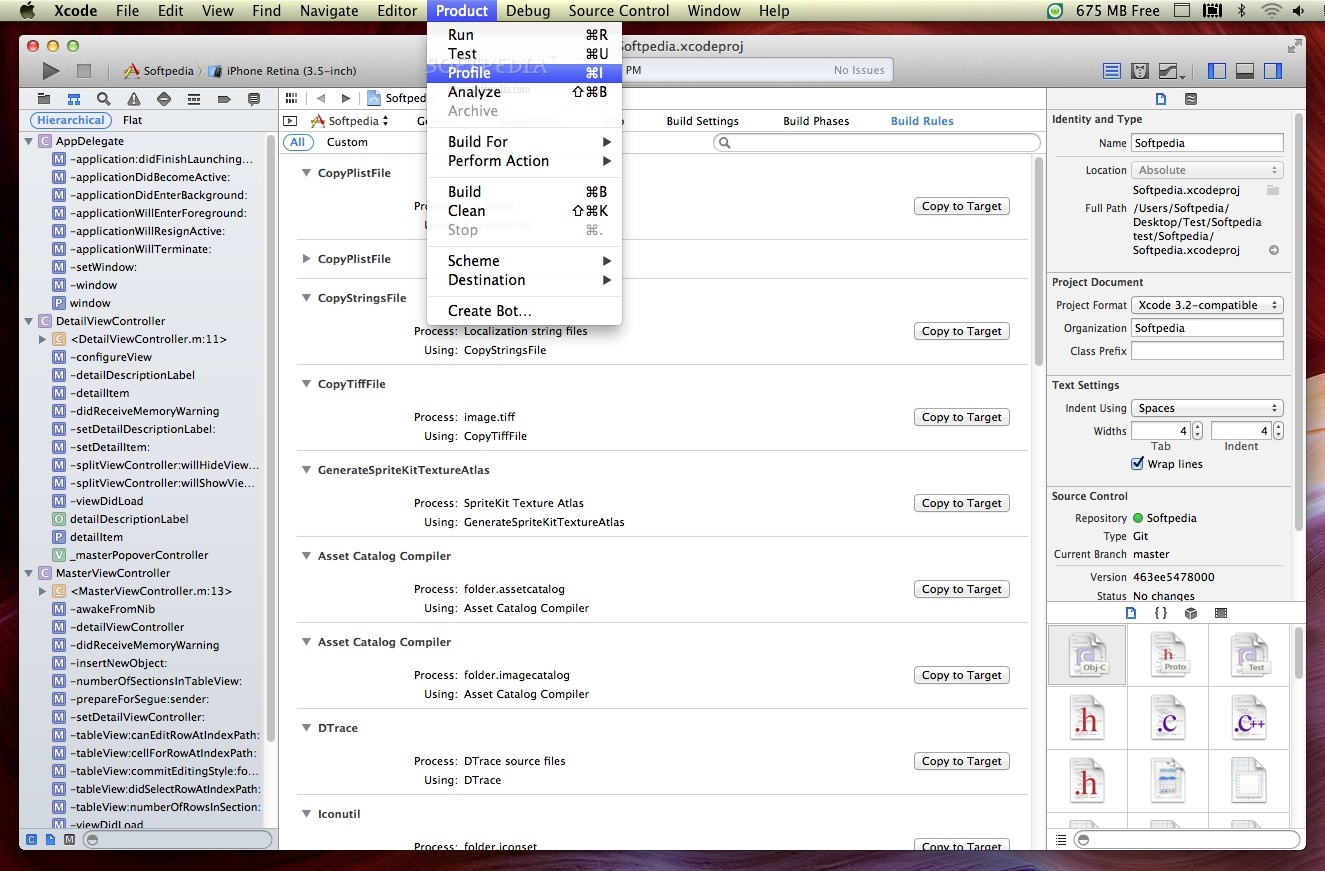
- #Apple xcode macsmayo9to5mac android
- #Apple xcode macsmayo9to5mac software
- #Apple xcode macsmayo9to5mac code
Developers for iOS and MacOS can still use bitcode with a warning, but this will later be removed. This has led to a major overhaul in the form of the Xcode 14 beta, where Apple has deprecated the option to build bitcode apps. Notably, at the WWDC 2022 keynote, there was mention of being able to better optimize purely for that architecture, which hints that the LLVM intermediate layer may be no longer used for that purpose in the future. How is bitcode affected by future Xcode releases?Īpple has now reached a point where all of its new hardware uses arm64 and no longer requires the flexible back-ends provided by LLVM.

#Apple xcode macsmayo9to5mac code
This has allowed Apple to do the final stage lowering to the machine code for the particular device to be installed on. Apple has even mandated in some cases that apps have to be submitted in bitcode format - not machine code. The fact that the LLVM libraries also provide all the APIs necessary for manipulating the bitcode has further contributed to its dominance.Īpple has previously made use of bitcode within its toolchain because it had several CPU architectures to support this such as Intel, arm32 and arm64. The advantage for them is that they too can also target many back-ends and also typically several front-ends. This has led to many vendors creating obfuscators that operate on bitcode. What is bitcode?īitcode is a serialized version of LLVM’s Intermediate Representation.Ī large reason for LLVM’s popular usage in app development, and therefore bitcode’s, is that it’s open source and available to everybody.
#Apple xcode macsmayo9to5mac software
For apps on iOS and MacOS, those obfuscating at the intermediate level are subject to any changes or major overhauls to Apple’s integrated software development - such as Xcode 14. However, there is one downside: It is often tied to the toolchain. If an obfuscator can operate at this level, it’s the easiest to build and maintain because it’s not tied to either the front-end compiler language or the back-end machine instruction set. LLVM is useful because it allows compilers such as Clang or Rustc to target different backends such as Linux on X86_64, armv7, iOS and Windows. LLVM is a set of compiler and toolchain technologies that can be used to develop a front-end for any programming language and a back-end for any instruction set architecture. Low-Level Virtual Machine is the best known example of this. The top 6 enterprise VPN solutions to use in 2023ĮY survey: Tech leaders to invest in AI, 5G, cybersecurity, big data, metaverseĮlectronic data retention policy (TechRepublic Premium) Google offers certificate in cybersecurity, no dorm room required Between many compilers and the native code is an intermediate layer where optimizations are done.

Obfuscation can be inserted at three different levels: The source based level, the native binary based level and by far the most dominant approach, the intermediate level. Obfuscation is therefore used to protect these tools. This includes things like hook detection, anti-debug and anti-tampering, all of which are ironically vulnerable to tampering or removal unless well hidden. In the field of app shielding, we use a number of tools to enforce a safe environment for apps to operate within. For instance, obfuscation can be used to hide an algorithm that a company doesn’t want competitors to understand - most notably to protect security code.

When done effectively, obfuscation makes reverse-engineering a program extremely difficult and is therefore used to protect sensitive intellectual property. SEE: Mobile device security policy (TechRepublic Premium) The idea behind obfuscation is to modify an executable file so that it is no longer transparent to a hacker but still remains fully functional. What is code obfuscation?Ĭode obfuscation is a powerful technique for protecting code and an essential part of application security products. Unless security vendors adapt, in the not-too-distant future many apps may face a gaping hole in their security. With the release of the Xcode 14 beta, soon to become the standard for iOS and MacOS development from this year, Apple has deprecated the option to build bitcode apps.įor the application security industry, who have largely designed and integrated their approach to code obfuscation around bitcode, this has vast ramifications.
#Apple xcode macsmayo9to5mac android
For more info, visit our Terms of Use page.įor app developers, Low-Level Virtual Machine bitcode has been a staple of Apple’s toolchain and the Android Native Development Kit for the past seven years. This may influence how and where their products appear on our site, but vendors cannot pay to influence the content of our reviews. We may be compensated by vendors who appear on this page through methods such as affiliate links or sponsored partnerships.

What does the demise of bitcode mean for the future of application security?Īndrew Whaley, senior technical director at Promon, explains the problem with Apple's Xcode update.


 0 kommentar(er)
0 kommentar(er)
